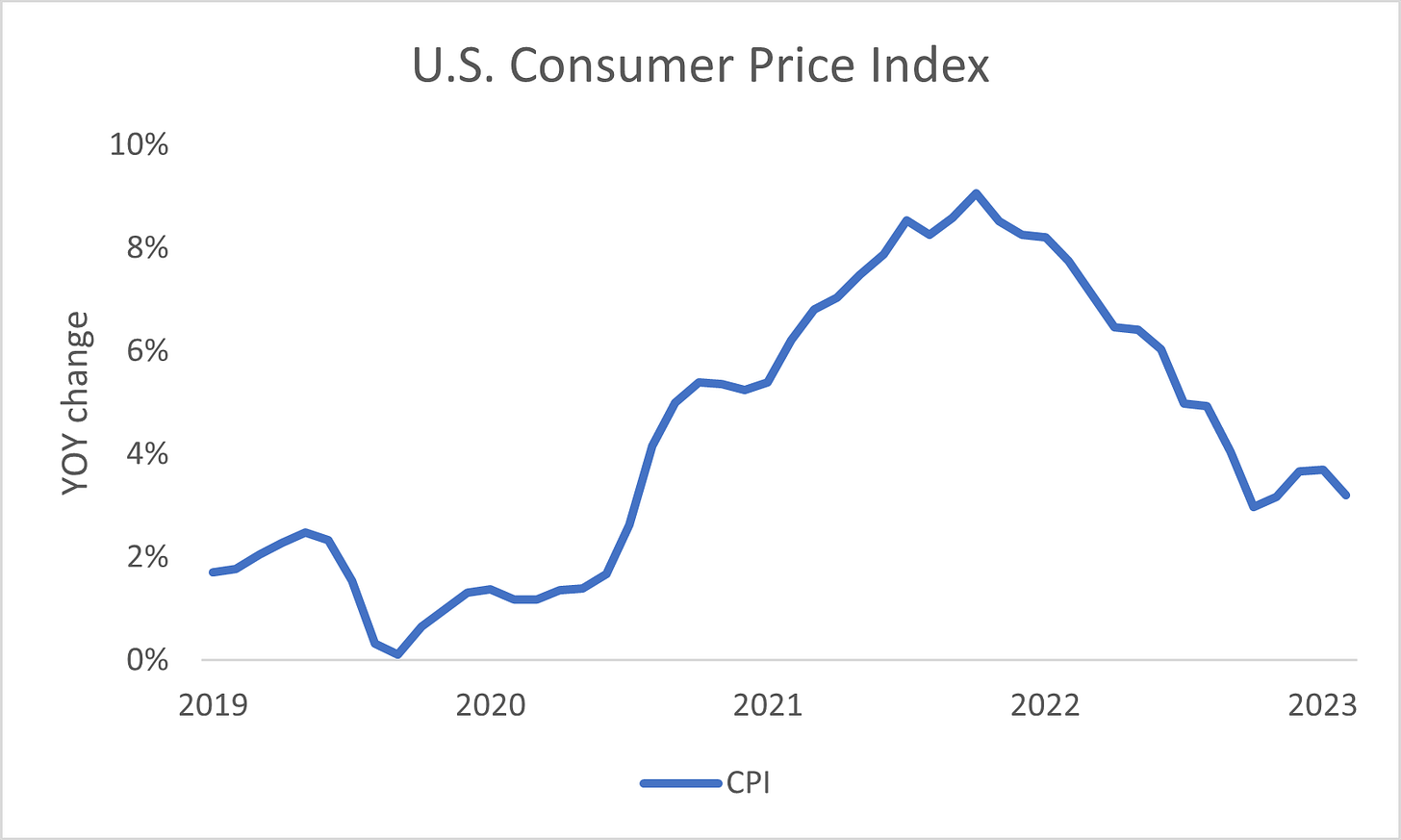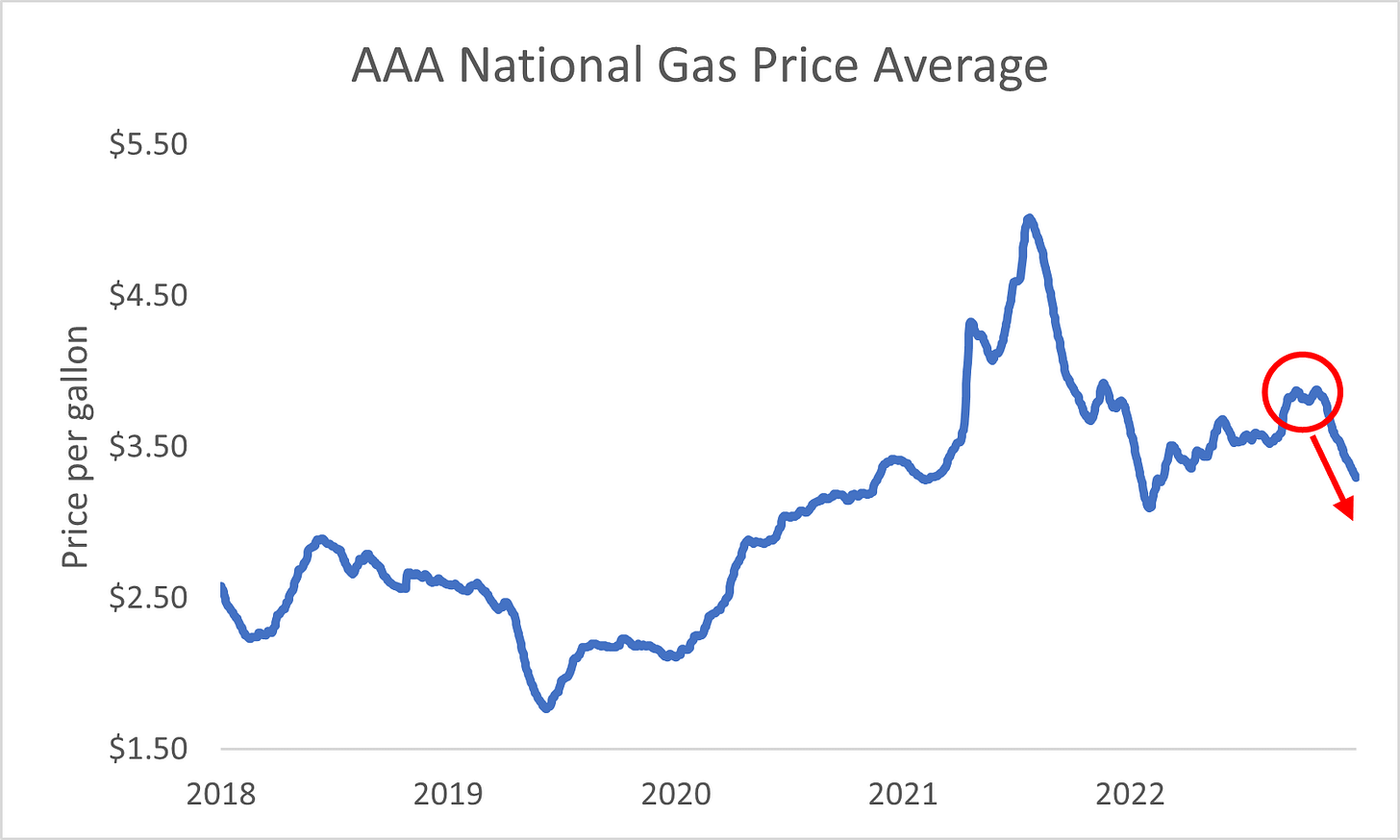Gas Prices Point to Another Drop in Inflation Growth
Inflation growth looks set to fall even more...
Currently, we’re in the throes of the retail sector’s third-quarter earnings reports. And if you’ve been following companies’ forward-looking commentary, you’ll notice a trend… management teams are worried about a spending slowdown.
The latest examples came yesterday from home-improvement giant Lowe’s (LOW) and electronics behemoth Best Buy (BBY). Both companies lowered their outlook for the year. Lowe’s said consumers are spending less money on big-ticket items. Best Buy blamed household spending patterns, calling them “uneven” and less predictable.
For Best Buy to have lowered its fourth-quarter outlook is certainly concerning. After all, the holidays account for about 35% of full-year sales. That decision was not made easily. But, while these types of statements highlight slowing economic growth, there’s an upside… consumers spending less means inflation growth should drop.
As you can see in the chart, the headline consumer price index (“CPI”) is steadily falling. October’s reading of 3.2% (far right) was one of the lowest we’ve experienced since prices began to shoot up in early 2021, according to the U.S. Bureau of Labor Statistics.
One of the primary drivers of that slide was easing fuel costs. And based on the latest data for prices at the gas pump, inflation growth is set to fall even more when the November results are released. The change should increase the Federal Reserve’s conviction that its rate hikes are working. And, if the trend keeps up, it will provide the central bank with room to start cutting interest rates once more.
But don’t take my word for it, let’s look at what the data’s telling us…
The easiest way to see gasoline prices is data produced by the America Automobile Association (“AAA”). Every day it tracks the price to buy a gallon of regular unleaded gasoline in each state. It then combines the numbers to come up with a national average.
We use those numbers to find the average monthly price. And based on what we’re seeing, the price of gas has been steadily declining. Look at this chart of gas prices over the last five years…
The red circle above highlights the recent summer peak in prices. But, as you can see, looking out to the right, the average has been falling ever since. According to AAA, the current price for a gallon of gas is $3.30. That's down $0.58 or roughly 15% from the mid-September peak of $3.88.
More importantly, so far in November, the average price for a gallon of gas is $3.38. That compares to the $3.70 average last November, or a drop of 8.6%. The change is important because the inflation numbers we care about are on a year-over-year basis.
Now look at gas prices compared to CPI…
The chart above shows us that gas prices are a leading indicator of inflation growth. As you can see, prices at the pump began rising rapidly in late 2020 ahead of the inflation surge in 2021. Then, in 2022, gas prices peaked and started dropping once more, ahead of the move lower in inflation.
After all, I don’t know about your house, but in mine, we spend a fair amount of time driving around for errands, work, and shuttling kids to school, games, and friend’s houses. So, a change up or down in the prices at the pump is going to have an impact on our wallets.
You may be asking, why am I so certain the recent data means CPI will slide again in November?
Well, last month, headline CPI data was much weaker than Wall Street expected. As we established at the start, it fell to 3.2% compared to the 3.7% growth in September. Gasoline prices slipped 5.6% this past October compared to a year ago. That’s much less than the 8.6% drop we’ve seen this month.
That tells me that unless we see a sudden spike higher in gas prices, we should see inflation growth slow even more when the November data is reported next month. Weak results should be further confirmation that the Fed’s rate-hike cycle is over... and it leans toward the potential for cuts down the road.
As an investor, that tells us the U.S. dollar should remain under pressure. Because, if there’s potential for the central bank to cut interest rates, that means bond yields will fall. Wall Street views that as a sign the greenback will have less buying power. That should boost the outlook for precious metals prices like gold, as it will cost more dollars to buy an ounce.
One way to invest in gold is through purchasing the Goldman Sachs Physical Gold ETF (AAAU). It trades about 1.4 million shares a day so it’s easy to buy and sell. It’s also a way to own the physical metal without having to store it because the ETF holds bullion against its assets. In addition, it has the same makeup and return as the more popular SPDR Gold Shares ETF (GLD) but cheaper fees and a lower entry point.
This way, you can diversify your portfolio against an economic downturn and sleep soundly at night.





